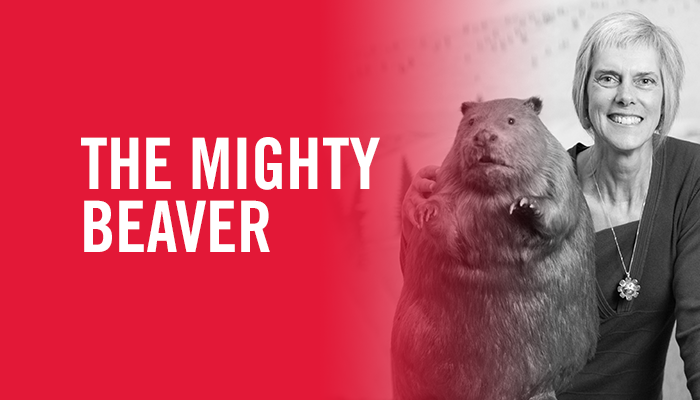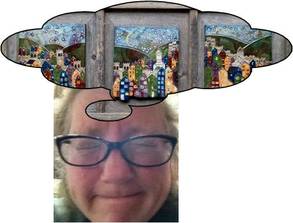Sometimes the stars align and a great deal of good news comes to the forefront at once. Sure, days and weeks and sometimes years of hard work went into it. And sure it’s just random now that its finally coming together in sync. There isn’t really a reason for it, except folks want to tie up loose ends before the long weekend of celebrations. But let’s just celebrate the independence of some urban beavers and their founding fathers, shall we?
Beaver sightings reported in Los Gatos Creek in Campbell
Steve Holmes, executive director of the South Bay Clean Creeks Coalition, said he’s seen beavers along the creek stretch in Campbell—in person and on video shot with a camera s tationed where they primarily reside.
tationed where they primarily reside.
Back in 2013, Holmes said he saw a small family of beavers in the Guadalupe River near the SAP Center in downtown San Jose. At the time he wasassessing the area for potential creek cleanups.
“We’re down there and looking down from a bridge in the downtown. I looked down and saw a tree had been chewed,” he said. “It looked like someone was chopping it down with an ax. We went down for a closer inspection, and it turned out it was a beaver. Not just one, but a whole family.”
Hurray for beavers in San Jose! And hurray for Steve for being happy about it! We’re not going to say hurray for this reporter because she’s a little lackluster on the subject and doesn’t talk to the right people or do nearly as good a job as the 2013 stories. Just look at this cartoon stick figure of a biologist from fish and game who is SO out of her element!
Terris Kasteen, a biologist with the California Department of Fish and Wildlife, confirmed that beavers were reintroduced into Lexington Reservoir and said some may have been pushed down from the reservoir during the heavy winter rains and subsequent flooding in the area.
“One wandering downstream is not surprising,” she said.
Navroop Jassal, a Santa Clara Valley Water District biologist, said beavers were introduced to the reservoir in the 1990s, and the ones seen in the creek could be from there or possibly from the family of beavers seen in 2013 that Holmes spotted as well.
“The history of beavers in the area isn’t well known,” Jassal said.
The water district monitors certain species in creeks, but does not have an active program for beavers and does not plan to start one, according to Jassal. Instead, it will keep an eye on the fallout from potentially destructive beaver behavior such as fallen and chewed trees or damming. The district would then alert the Department of Fish and Wildlife.
“We would be concerned if it’s damming up areas and backing up the flow of the waterway,” Kasteen said.
Kasteen said a beaver presence in the creek over time could affect waterways and result in trees dying and not regrowing. People are advised to keep their distance from the animals and their habitat.
“More or less stay away from them,” Kasteen said.
 I’m sorry but that’s HILARIOUS!!! Not only haven’t you read our articles published in your OWN journal Terris about the history of beaver in coastal rivers in including Campbell, but are ready to depredate them now before they do anything because they’re going to build a dam one day, and you warn folks not to approach them because beavers are like furry hand grenades with the pin pulled out.
I’m sorry but that’s HILARIOUS!!! Not only haven’t you read our articles published in your OWN journal Terris about the history of beaver in coastal rivers in including Campbell, but are ready to depredate them now before they do anything because they’re going to build a dam one day, and you warn folks not to approach them because beavers are like furry hand grenades with the pin pulled out.
They could go OFF at any moment.
Goodness gracious, Terris. I think you get a letter. And guess what else? Now that we’re all talking about URBAN BEAVERS I found out yesterday that our chapter on urban beavers was published in the restoration guidebook 2.0 yesterday. I know you will want to read every word but I’m not yet sure how to just publish that section, so check out the entire document and get ready to spend a great deal of time on chapter 7. I would just post what we wrote but of course the slasher editor fairy altered much (but not ALL) of my beautiful prose, and the original no longer relates entirelt.  There is stuff in this chapter I’m not thrilled about – like the word MANAGEMENT for one, and a sentence that is so horrifying I’m still trying to get it shaved off. (Go find it yourself). But the fact that it exists at all is a Martinez miracle, and the sections by Dr. Wohl are breathtaking, the accounting of beaver solutions prodigious, my own humble tweaking of psychology and ecology is pretty darned effective, and the silly sheet is gone, so let’s look on the bright side, shall we?
There is stuff in this chapter I’m not thrilled about – like the word MANAGEMENT for one, and a sentence that is so horrifying I’m still trying to get it shaved off. (Go find it yourself). But the fact that it exists at all is a Martinez miracle, and the sections by Dr. Wohl are breathtaking, the accounting of beaver solutions prodigious, my own humble tweaking of psychology and ecology is pretty darned effective, and the silly sheet is gone, so let’s look on the bright side, shall we?
The very first case study is MARTINEZ whooo whoo and makes us seem pretty dam plucky, and kind of adorable I must say. I do get the feeling that our story has changed the playing field forever, and that’s a pretty sweet legacy.
What are you still doing here? Go read it!



 Hope Ryden, whose lifelike photographs of North American beavers, coyotes, mustangs and other wildlife helped elevate them into poster animals for conservation campaigns, died on June 18 in Hyannis, Mass. She was 87.
Hope Ryden, whose lifelike photographs of North American beavers, coyotes, mustangs and other wildlife helped elevate them into poster animals for conservation campaigns, died on June 18 in Hyannis, Mass. She was 87. donate signed copies to the Silent Auction. She always said that the Martinez beaver story made her happy and made her feel as if new options were possible. She was friends with Sherri Tippie and knew the good folks at Beavers: Wetlands and Wildlife. She never stopped caring about beavers even after her amazing 4 years.
donate signed copies to the Silent Auction. She always said that the Martinez beaver story made her happy and made her feel as if new options were possible. She was friends with Sherri Tippie and knew the good folks at Beavers: Wetlands and Wildlife. She never stopped caring about beavers even after her amazing 4 years.
 For some time now, hardworking road crews have been prepping that stretch of highway, filling dips and doing “grind outs” where the old surface is badly cracked, in preparation for putting down a new layer of asphalt, according to Kitsap County Road Superintendent Jacques Dean. The goal is to roll down the new layer towards the end of this week, “depending on the weather and completion of the repairs,” Dean said.
For some time now, hardworking road crews have been prepping that stretch of highway, filling dips and doing “grind outs” where the old surface is badly cracked, in preparation for putting down a new layer of asphalt, according to Kitsap County Road Superintendent Jacques Dean. The goal is to roll down the new layer towards the end of this week, “depending on the weather and completion of the repairs,” Dean said.








 We have some wonderful new auction items to mention this fine sunday morning, and I’m thinking we should start with Jennifer Lovett’s smart book for teens and tweens “
We have some wonderful new auction items to mention this fine sunday morning, and I’m thinking we should start with Jennifer Lovett’s smart book for teens and tweens “ sure she was surprised to hear from me begging at her door but she generously agreed to send me one of the works she had recently fired. The complex technique demands carving the image on wet clay then glazing it into color. You really have to see it in person to understand how the colors, textures and rough barn wood all work together. It’s gorgeous. Doesn’t this need to be on your wall immediately?
sure she was surprised to hear from me begging at her door but she generously agreed to send me one of the works she had recently fired. The complex technique demands carving the image on wet clay then glazing it into color. You really have to see it in person to understand how the colors, textures and rough barn wood all work together. It’s gorgeous. Doesn’t this need to be on your wall immediately?




































